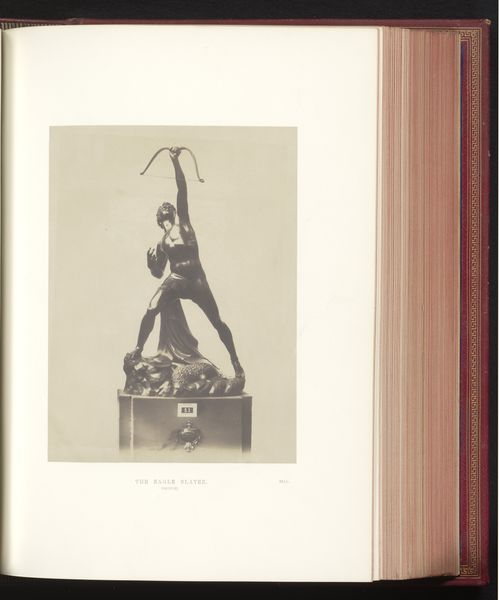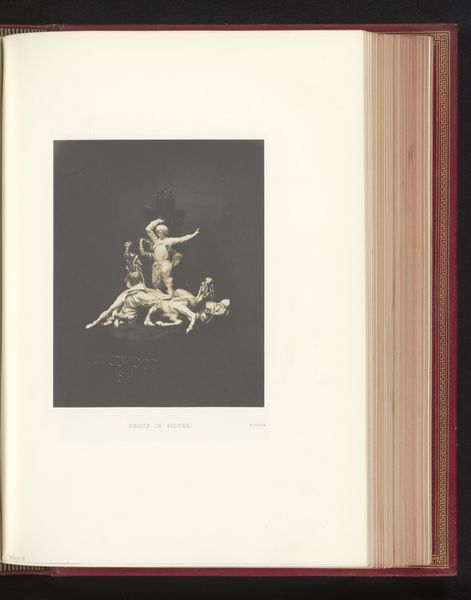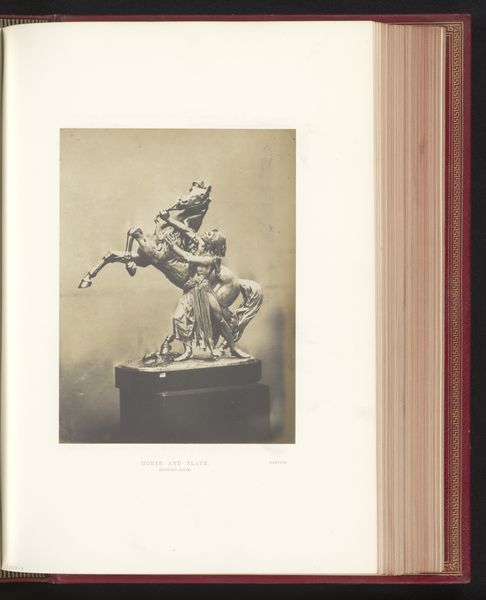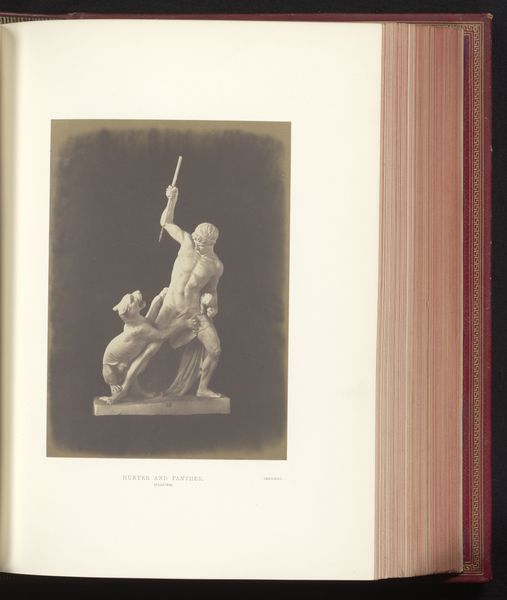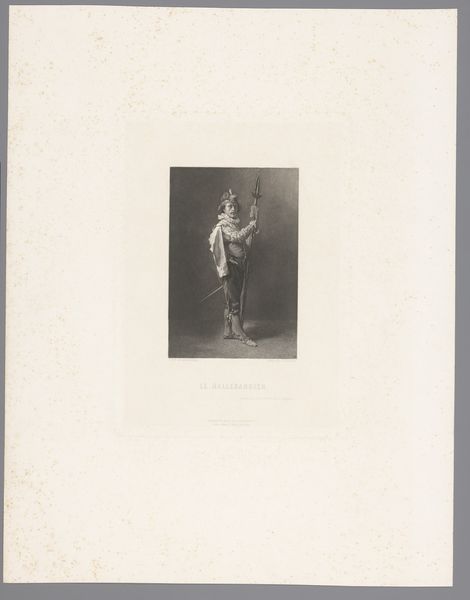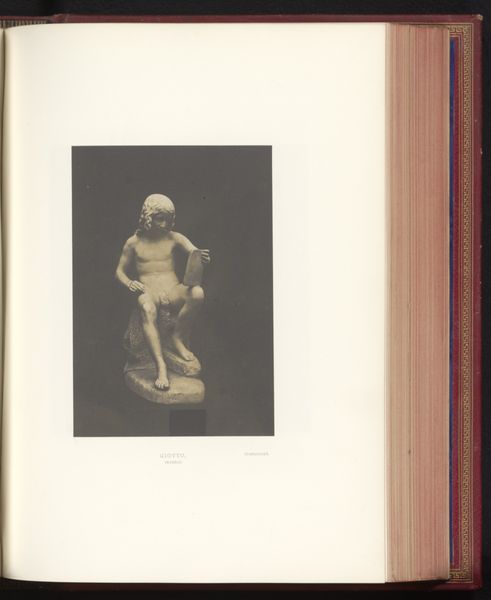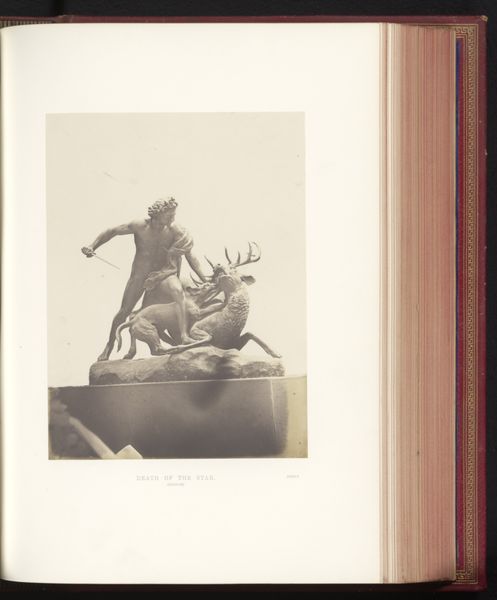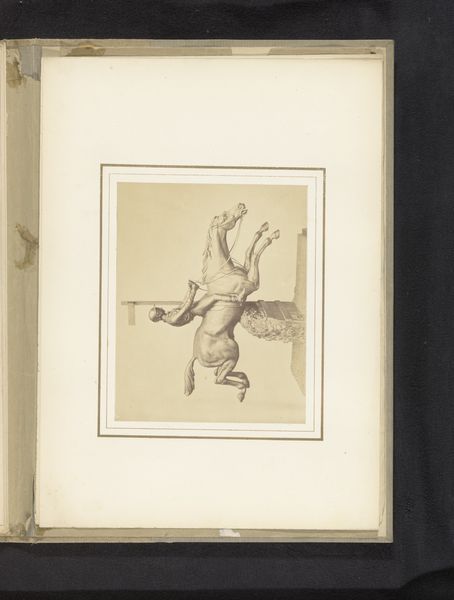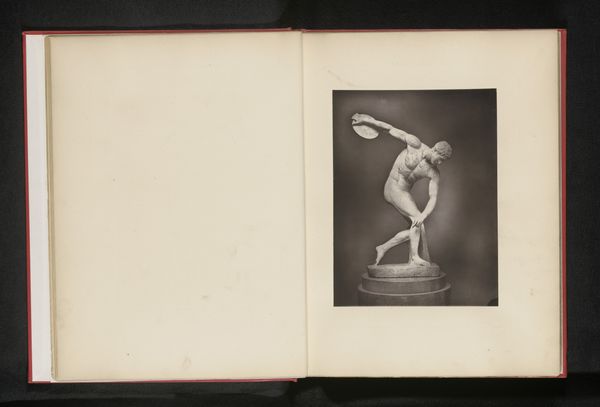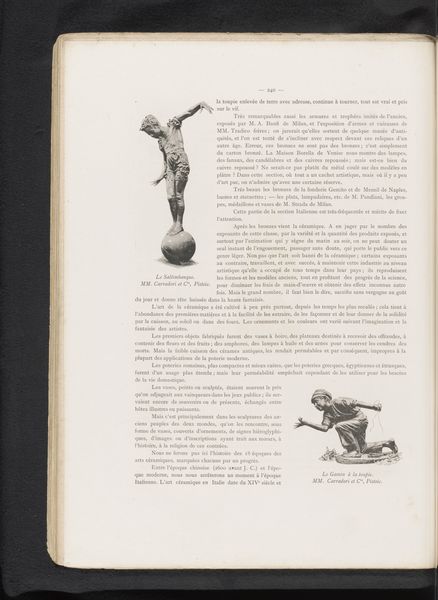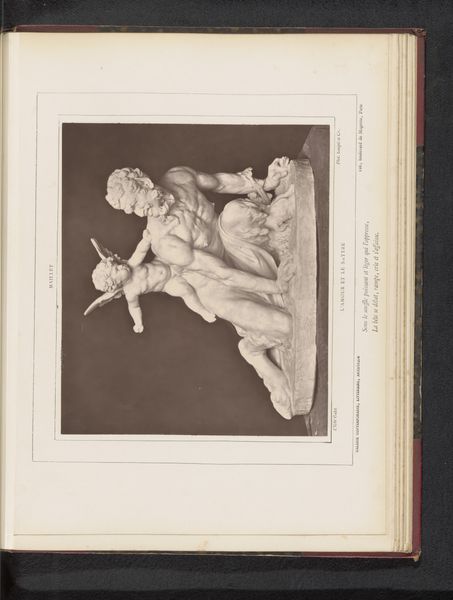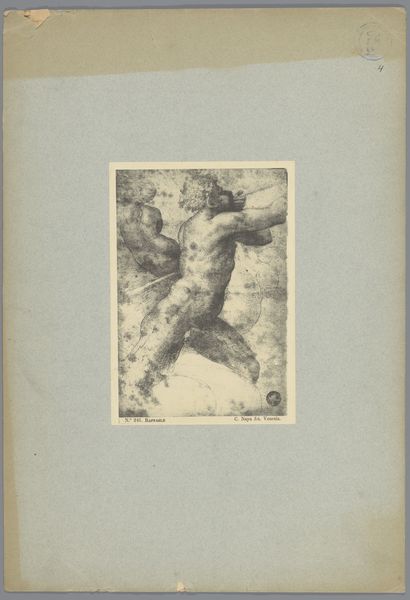
Sculptuur van een dansende faun door Eugène-Louis Lequesne, tentoongesteld op de Great Exhibition of the Works of Industry of All Nations van 1851 in Londen 1851
0:00
0:00
bronze, sculpture
#
greek-and-roman-art
#
landscape
#
bronze
#
figuration
#
sculpture
#
academic-art
Dimensions: height 206 mm, width 121 mm
Copyright: Rijks Museum: Open Domain
This photographic print captures Eugène-Louis Lequesne's "Sculpture of a Dancing Faun," which was exhibited in London in 1851. The sculpture presents a dynamic, almost theatrical spectacle. Note how the diagonal line of the faun's body, from his extended arm to his raised leg, creates a sense of upward movement and instability. This is juxtaposed against the more static, horizontal mass upon which he stands. The smooth texture of the faun's skin contrasts with the rougher, less defined surface beneath him. The faun, a mythological creature, embodies a liminal state between human and animal. This reflects the broader artistic and philosophical concerns of the time, particularly the exploration of boundaries. Lequesne's work challenges fixed categories and invites us to reconsider our understanding of nature. The faun's dance, captured here in stilled form, becomes a powerful signifier of transformation and transgression. Art, like dance, does not have a singular meaning.
Comments
No comments
Be the first to comment and join the conversation on the ultimate creative platform.
